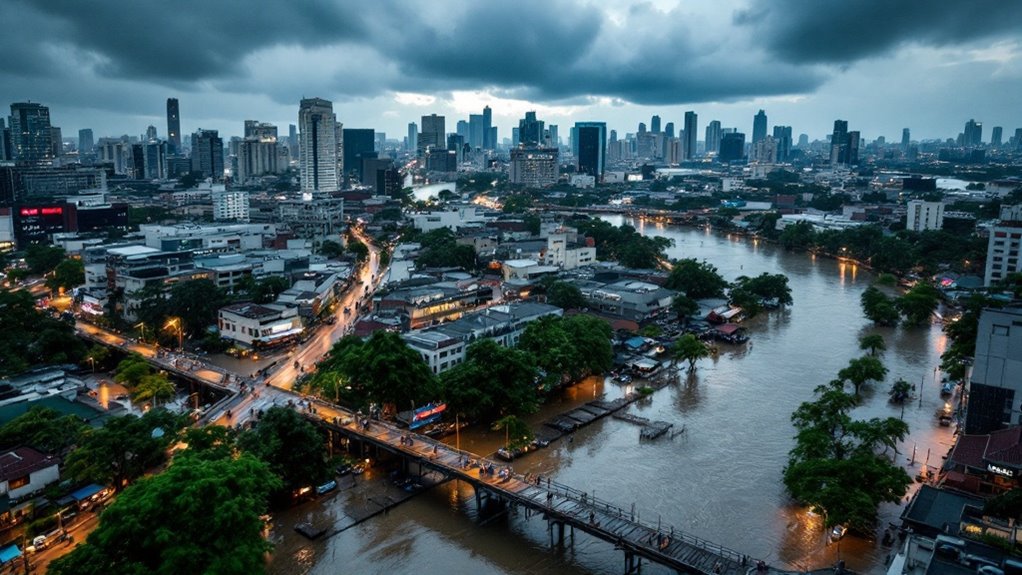Bangkok’s rainy season, typically from May to October, exposes the city to severe flooding due to rapid urbanization, subsiding land, and aging drainage systems, some over thirty years old. Low-lying districts and industrial areas face regular inundation, disrupting transportation, essential services, and economic activities. Although efforts such as floodwalls, pumps, and urban forests have been introduced, challenges remain as climate change intensifies. Detailed strategies and community initiatives shape how Bangkok continues to respond to these persistent seasonal threats.
Although Bangkok is recognized as a vibrant economic and cultural hub in Southeast Asia, the city faces persistent and complex challenges during its annual rainy season. With rapid urban expansion, large portions of Bangkok have been transformed into impervious surfaces such as concrete and asphalt, reducing the land’s natural ability to absorb rainfall. This transformation, combined with intensified rainfall linked to climate change and steadily rising sea levels, has led to more frequent and severe flooding throughout the city’s low-lying districts.
The situation is further complicated by Bangkok’s ongoing subsidence, with the city sinking at a notable rate each year. This subsidence increases the city’s vulnerability to floodwaters, particularly during peak monsoon months when river levels swell and drainage systems are pushed beyond their limits. Changes to river habitats and declining water quality also alter flood dynamics, impacting both flood management and the survival of native aquatic life, including the critically endangered Siamese carp. Thailand ranks ninth globally in the INFORM Index for flood risk, underscoring the severity of the threat facing Bangkok and its surrounding regions.
Existing infrastructure, often strained by heavy rain, is not always capable of managing the volume and speed of floodwaters. This leads to road closures, submerged neighborhoods, and disruptions in essential services. Industrial zones, which are commonly situated in low-lying areas, are especially susceptible to economic losses from flood damage and production halts. The tourism sector, a significant contributor to the city’s economy, is also affected as floods deter visitors and impact local businesses. Residents in flood-prone communities face repeated displacement and property loss, contributing to ongoing social challenges. Bangkok’s drainage system is over 30 years old and suffers from maintenance issues, making it increasingly difficult to cope with the demands of modern urban flooding.
Efforts to address these realities include the development of urban forests to absorb rainwater, the construction of floodplains and weirs to control water flow, and the installation of flood walls and pumps to protect key areas. Raising road levels has provided only temporary relief.
Looking forward, strategies focused on sustainable land use, improved water retention, and upgraded infrastructure are critical. Enhanced early warning systems and community engagement are also essential elements for building resilience. As climate trends intensify, Bangkok’s capacity to adapt and implement thorough flood mitigation measures will determine the city’s long-term sustainability and safety during the rainy season.









